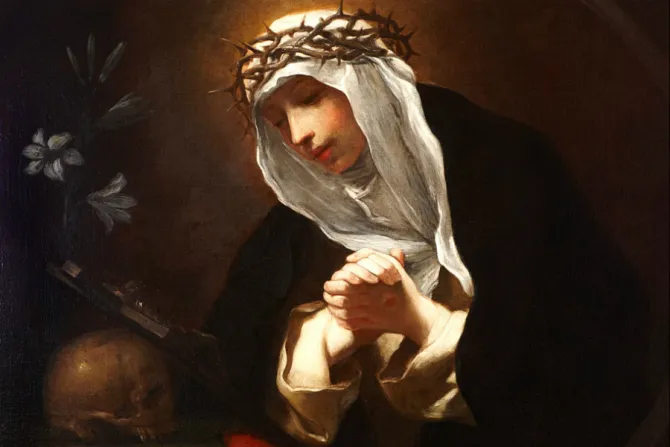Vatican City, Apr 29, 2025 / 04:00 am
On the feast of St. Catherine of Siena in 2021, Pope Francis expressed his hope that the “great female figure of faith” would continue to inspire a more joyful and fervent witness.
“The Holy Father hopes that, especially in the context of the 560th anniversary of the canonization of the Sienese saint, the example of such a generous disciple of Christ will foster in all an ever more joyful and fervent witness to faith and charity to promote the civilization of love,” Cardinal Pietro Parolin wrote in a telegram on behalf of the pope, published April 29, 2021.
The Vatican secretary of state sent the telegram to Cardinal Augusto Paolo Lojudice, the archbishop of Siena-Colle di Val d’Elsa-Montalcino, expressing the pope’s good wishes to Catholics in the archdiocese during their three-day celebration of their hometown saint.
St. Catherine of Siena is a doctor of the Church and co-patron of Europe. She played a pivotal role in ending the Avignon exile of the successors of Peter in the 14th century.
Born in Siena in 1347 on the feast of the Annunciation, she exhibited an unusually independent character as a child and an exceptionally intense prayer life.
When she was 7 years old, she had the first of her mystical visions in which she saw Jesus surrounded by saints and seated in glory. In the same year, she vowed to consecrate her virginity to Christ.
When, at the age of 16, her parents decided that she should marry, she cut off her hair to make herself less appealing, and her father, realizing that he couldn’t contend with her resolve, let her have her way.
She joined the Dominican tertiaries and lived a deep and solitary life of prayer and meditation for the next three years in which she had constant mystical experiences, capped by the end of the three years with an extraordinary union with God granted to only a few mystics, known as “mystical marriage.”
St. Catherine suffered many periods of desolation alongside her mystical ecstasies, often feeling totally abandoned by God. She also tended to the sick, poor, and marginalized, especially lepers.
Her “Dialogue,” a spiritual classic, records her visions, which she dictated in a state of mystical ecstasy.
God called her to a more public life while she was still in her 20s, and she corresponded with many influential figures, advising, admonishing, and exhorting them to holiness, including the pope himself, whom she also rebuked when she saw fit.
She helped achieve peace when the Holy See and Florence were at war. While on her deathbed, she made possible the healing of the great schism between the followers of the legitimate pope, Urban VI, and those who opposed him.
She died in Rome on April 29, 1380, at the age of 33, and the stigmata appeared on her incorrupt body after her death. She was canonized by Pope Pius II on June 29, 1461.
She once said: “If you are what you should be, you will set the world ablaze.”
This story was first published on April 29, 2021, and has been updated.




